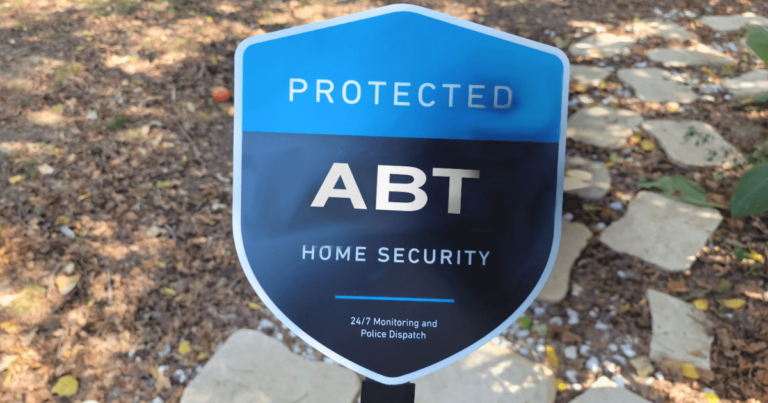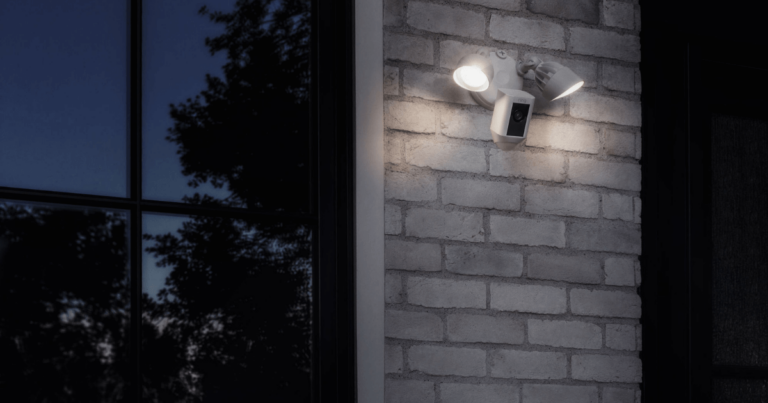Take a short walk around any neighborhood and you’re likely to see a variety of alarm company signs perched on lawns or decals stuck on windows. It’s become increasingly popular to post warning signs of monitored security to scare off intruders even if you don’t have an alarm system installed. But do fake security signs and stickers really prevent break-ins?
Can Fake Security Signs and Stickers Prevent Break Ins?
For over 11 years, SafeWise experts have conducted independent research and testing to create unbiased, human reviews. Learn how we test and review.
By signing up, you agree to our Terms and Conditions and Privacy Policy.
The benefits and risks of using fake home security signs
Benefits
While it might not be the most effective way to protect your property, posting a yard security sign is better than taking no security measures.
- Let’s be real. Most people who opt for throwing up a fake ADT sign or Vivint yard sign do it because it’s less expensive than buying a real security system.
- Signs and stickers for popular security brands will set you back about $15–$20 and can be purchased easily online.
- Sticking a sign in the window or by the door for would-be thieves to read is probably the least labor-intensive security measure you can take. We won’t judge you for being lazy, but file this under “you get what you put into it.”
- Signs might work. "Might" is the operative word here. Fake security signs are a popular determent method, and for that reason, they’re not always effective. But, as we said earlier, it’s better than doing nothing. Fake it until you make it.

Image: Alina Bradford
Risks
Fake security signs not supported by alarms or cameras can also have significant risks. If you’re going to display security yard signs for monitored security you don’t have, know the downsides:
- Thieves debunking your claims: If someone is casing your property, they can do a quick Google search to see if your claimed security company is legitimate. And even if you do opt for security signage that looks legit, you could still get caught faking it. Even a quick peek in a window or around a door to scout for an alarm keypad or a mounted camera will quickly give thieves a sense of whether your warning signs are more bluster than bite.
- Copyright laws: If you use a real monitored security company for your fake yard signage, you could be violating laws about using copyrighted material without permission. And yes, that can be a crime that’ll land you in legal trouble, so double-check laws in your state before you proudly mount that ADT security sign.
- Less protection from burglary risk: FBI crime statistics indicate a burglary happens every 23 seconds in America, which adds up to an average of about 3,757 burglaries a day.2 Beyond the emotional toll of being a crime victim, break-ins have a high financial cost. In 2019, estimates showed homeowners lost about $2,661 per burglary—nearly double the price of your average home security system starter kit.3 That’s a lot of potential risk to expose your home and family to when DIY home security systems or a few cameras are relatively inexpensive.
Technically, no. The sign could be a copyright infringement if it uses the ADT logo. While you won't get in trouble, the company making them probably will. Instead of buying a fake sign, we suggest snagging a sign or sticker from a friend with an ADT system if they have an extra to spare.
Alternatives to fake signs
There are a few low-cost alternatives you can explore rather than advertising a security system you don’t have. And they all come with the bonus of better theft deterrent even if you’re not ready to opt for professional monitoring.
Install a DIY home security system or a few cameras
Info current as of publish date. Offers and availability may vary by location and are subject to change.
Image: Ring
You don’t have to run out and buy a top-of-the-line system to start getting some benefits from a few extra security measures. Start small with a doorbell camera and gradually add components as your budget allows. Even a few battery-powered motion sensors on your doors or windows can sound an alarm and scare away thieves. And those few seconds of warning can be vital to preventing property loss and dispatching help.
Get a dog
Using man’s best friend as an intruder deterrent seems like the oldest trick in the book, but it’s an effective one. A 2016 survey of 86 burglars discovered that dogs, specifically large breeds, were cited as the most effective security measure.4 A menacing, throaty bark from a big dog can be all a potential intruder needs to convince them to move onto an easier mark.
Prune your bushes and shrubs
Having artfully arranged landscaping may enhance the curbside appeal and privacy of your home, but lots of shrubbery that conceals your front door and walkway also gives intruders a place to hide. Prune back those plants and make sure the main entry is in plain sight and well-lit. A front entrance visible from the street earns bonus points because it can also prevent package theft.
Expose entry points with motion-sensor floodlights

Image: Ring
Intruders appreciate operating under cover of darkness, so don’t let them have the advantage on your home turf. Floodlights that detect motion are relatively inexpensive and can be mounted at entry points around your property to shed a light on any suspicious activity in your yard. Today’s smart motion-sensor lights also have some nifty features like solar efficiency and adjustable lighting modes.
Install a smart lock
Often, burglars will try a front or back door first to see if they can gain access quickly rather than having to climb or hoist themselves through a window. Replacing your old door locks with a smart lock provides a better deterrent to thieves and enables you to lock and unlock your door from a distance.
Some smart locks even sport built-in alarms and are compatible with popular smart home hubs. The days of hiding that spare key under a fake rock when you go on vacation are long gone.
Look like you’re home even when you’re not
Today’s home automation has come a long way, and it’s much more sophisticated than auto timers for lights. Using an app, you can control lights remotely or choose a randomized mode that can vary lighting in different rooms and at different times.
Even if you’re not able to light up your house while you’re away, simple things like parking a car in the driveway can confuse anyone checking for signs that you’re home.
What’s the most effective way to deter thieves?
As you might have guessed, the most effective way to deter crime and avoid a potential break-in is to install a monitored home security system. If you’re hesitating about investing in one, keep in mind that home security systems have other advantages that pay off for homeowners, like discounted insurance premiums. Fully equipped security systems can also alert you to power outages, floods, or fires that could damage your property or endanger your loved ones.
Fake signs may be a cheap, easy fix that makes you feel secure, but effective burglary prevention requires better solutions. If you’re not in the market for an alarm system, considering common-sense security measures like better lighting and a canine companion is an excellent first step to making your home less of a target.
Sources
- Joseph B. Kuhns, ResearchGate, "Understanding Decisions to Burglarize from the Offender’s Perspective," December 2012. Accessed September 20, 2021.
- FBI, Uniform Crime Reporting, 2017 Crime in the United States, "Crime Clock," September 2018. Accessed September 20, 2021.
- FBI, Uniform Crime Reporting, 2019 Crime in the United States, "Burglary," September 2018. Accessed September 20, 2021.
- Kyle Iboshi, KGW News, "We Asked 86 Burglars How They Broke into Homes," December 2019. Accessed September 20, 2021.
